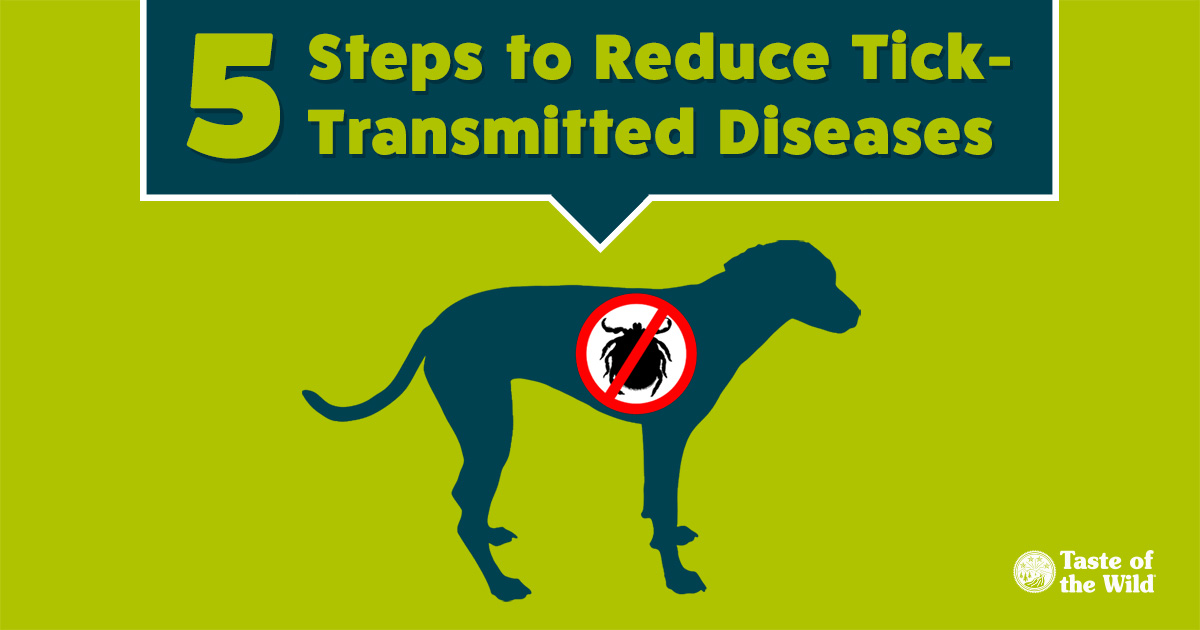
What do you think of when you hear the word tick? Creepy, crawly bloodsucker? Lyme disease or Rocky Mountain spotted fever? Or are you unfazed by the tiny, spider like parasites? Skin-crawling and squeamish reactions aside, how much do you know about the risks that ticks pose to our furry friends?
According to the Companion Animal Parasite Council (CAPC), Lyme disease and ehrlichiosis — diseases passed from ticks to pets (and people!) — will continue to threaten pet health, with higher tick activity levels predicted for many areas of the United States. The good news is you can take steps to protect your canine and feline companions from ticks.
Assess your pet’s risk
One of the first steps you can take to protect your dog or cat is to learn about the ticks in your area. Your veterinarian is an excellent source of information about the tick-transmitted diseases present in your region, and you’ll want to discuss what options are available for keeping your best friend tick-free and healthy. The CAPC website is another great information source that’s right at your fingertips. There, you can learn more about specific ticks, the illnesses they can pass along to pets, and how common those diseases are. There’s information about many other parasites, too. In addition, Jennifer Kvamme, DVM, provides an outstanding review of various tick-borne diseases affecting dogs and cats, including their signs and symptoms as well as how they’re diagnosed and treated.
When evaluating your pet’s risk from ticks, you and your veterinarian will want to consider several factors:
- Region of the country where you live
- Prevalence and species of ticks in your area
- Your pet’s lifestyle
- Protection you provide to your furry friend
Armed with this information, you’ll better understand the risks your four-legged family member faces during outdoor activities.
Keeping your pet safe
Completely preventing your pet’s contact — particularly your dog’s exposure — to ticks is very difficult. And since there are few early warning signs of tick-transmitted diseases, annual checkups are important to your dog’s and cat’s health. Your veterinarian can screen your canine companion for several common tick-related diseases at the same time he or she is tested for heartworm disease. (Unfortunately, there isn’t a similar test for cats.) It’s the only way to know for sure if your dog has been exposed to any tick-borne disease-causing organisms.
The best way to keep ticks from attaching to your dog or cat is to routinely use a tick-control product, and many topical solutions, collars and oral medications are available. Although some veterinarians will recommend vaccinating your dog against Lyme disease, it still will be important to use a tick-control product since there are other diseases that ticks can pass along. Be sure to ask your veterinarian which tick control product is effective on the ticks in your area and best suited for your dog or cat.
Other steps you can take to reduce the chances that a tick will transmit disease to your pets:
- Check your dog or cat daily, especially if they spend time outdoors
- Keep your cat indoors
- Remove any ticks found on your pet right away
- Reduce tick habitats in your yard
If your four-legged friend tests positive for a tick-transmitted infection or develops signs of disease, your veterinarian will determine an appropriate treatment program that’s best for your pet’s health.
Don’t become ticked off by ticks this year. If you haven’t already talked with your veterinarian about your pet’s risk for disease from ticks and the best steps to take to reduce those risks, call to schedule an appointment today.
The information in this blog has been developed with our veterinarian and is designed to help educate pet parents. If you have questions or concerns about your pet's health or nutrition, please talk with your veterinarian.
